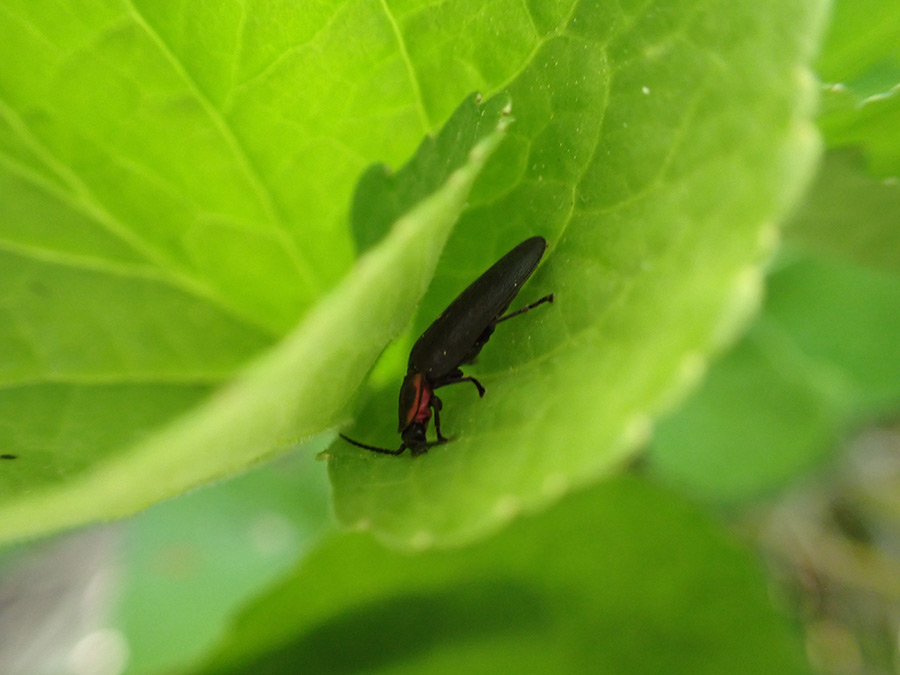Learn
As I have mentioned in earlier articles, I grew up on a Midwestern farm. As a child, one of the most magical times was in June just after twilight when the lawn and surrounding fields were filled with fireflies. My sisters, brother and I spent many evenings chasing them around our home in soft last light of the evening. While I enjoy the fact that in Arizona, unlike the Midwest, there are few mosquitos and no ticks or chiggers, but I did miss seeing fireflies. Fortunately, our new Deputy Executive Director, Rachel Laura, is a specialist in fireflies in Arizona and is current pursuing her Ph.D. on the subject. She has shared with me the amazing world of fireflies in Arizona. It seems I just wasn’t looking in the right places.
Rachel told me that I was not alone and that most people in Arizona don’t realize there are fireflies right in their backyard. The Verde Watershed is home to a species of firefly known almost entirely from Arizona. This species, the southwest spring firefly, lives along streams and wetlands in southern, eastern, and central Arizona, including right here in the Verde Valley.
Firefly life history
Fireflies are actually beetles and they are found in every state in the U.S. except Hawaii and every continent except Antarctica. These beetles live most of their lives as larvae on and in the soil, hunting snails, earthworms, and other invertebrates. Firefly larvae typically live one to two years, pupating into adults in order to breed. Adult fireflies typically live less than a month.
Surprisingly, not all fireflies flash the way we expect. There are actually three main life history strategies for fireflies. The flashing fireflies are the most well known. For these fireflies, both adult males and females look like beetles and use their light organs, or lanterns as they are called, to communicate with each other. The second strategy is that of the day-active or dark fireflies. They look much like their glowing brethren, but as adults they do not have lanterns. The last, and perhaps the strangest, is the glowworm firefly. The adult female glowworms look like a larva, with no wings. These females hold on a steady glow from the ground, rocks, or vegetation and await males to find them. The males look like a typical beetle and scan the ground looking for females.
Fireflies in Arizona
Arizona has around two dozen species of fireflies, including species that employ all three of these life history strategies. They can be found throughout the state, perhaps even right in your backyard. Some species, such as the Southwest spring firefly, are strongly tied to wetlands and streams. Others, such as many of our glowworm species, can be found in more arid areas, such as in forests, deserts, and grasslands.
What we know
Although there are many anecdotal reports of fireflies in and around the Verde Valley, only a handful of observations have ever been recorded and shared with scientists. The Coconino and Prescott National Forests, along with their dedicated volunteers, have been surveying for the past several years to try to learn more about these elusive creatures. They have been able to find and document several previously unknown populations of the Southwest spring firefly.
What’s happening this summer
This summer, researchers, including Friends of the Verde River Deputy Executive Director Rachel Laura and Candace Fallon at The Xerces Society, are teaming up with the US Forest Service to provide more intensive training to their volunteers. These volunteers will focus their efforts on sites that have the conditions that Southwest spring fireflies seem to love, moist soils and high humidity. These surveys will help us to learn more about what these fireflies need to persist at a site and will hopefully provide insights into how to ensure these magical insects persist for everyone to enjoy.
Threats to fireflies
Globally, fireflies are at risk from light pollution, pesticide use, and habitat loss and degradation. Since most fireflies communicate using light signals, residential or commercial lights, as well as sky glow from towns and cities, can make life harder for these fireflies. Pesticides, many of which are designed to kill insects, can negatively impact or kill fireflies as well. Pesticides can also kill firefly prey such as snails. Several Arizona fireflies are tied to areas with water, such as creek, rivers, and wetlands. Many areas in Arizona that historically supported these species have begun to dry, with many wetlands and creeks going completely dry. Fireflies need these moist soils to persist, so the loss of these areas likely means the loss of fireflies. In addition to the total loss of firefly habitat, the degradation of habitat is also a threat. The Southwest spring firefly builds a little soil igloo in order to pupate from a larva to an adult. This happens to coincide with one of the hottest months in Arizona. Drawing locals to the water to recreate and potentially resulting in trampling of these fragile life stages.
How you can help
Luckily, there are some easy ways that you can help. Turn off your lights at night, avoid using pesticides whenever possible, especially near sensitive areas, such as those along creeks and rivers, conserve water in and around your property, and when enjoying our beautiful Verde Watershed, practice leave-no-trace ethics by minimizing your impact on fragile soils along stream banks.
If you are interested in learning more about our local fireflies, have firefly sightings you’d like to report, or want to help survey for fireflies, you can check out The Xerces Society’s Firefly Atlas program at fireflyatlas.org. There you can find a firefly checklist, learn how to survey, see maps of known records, and submit your own data!






